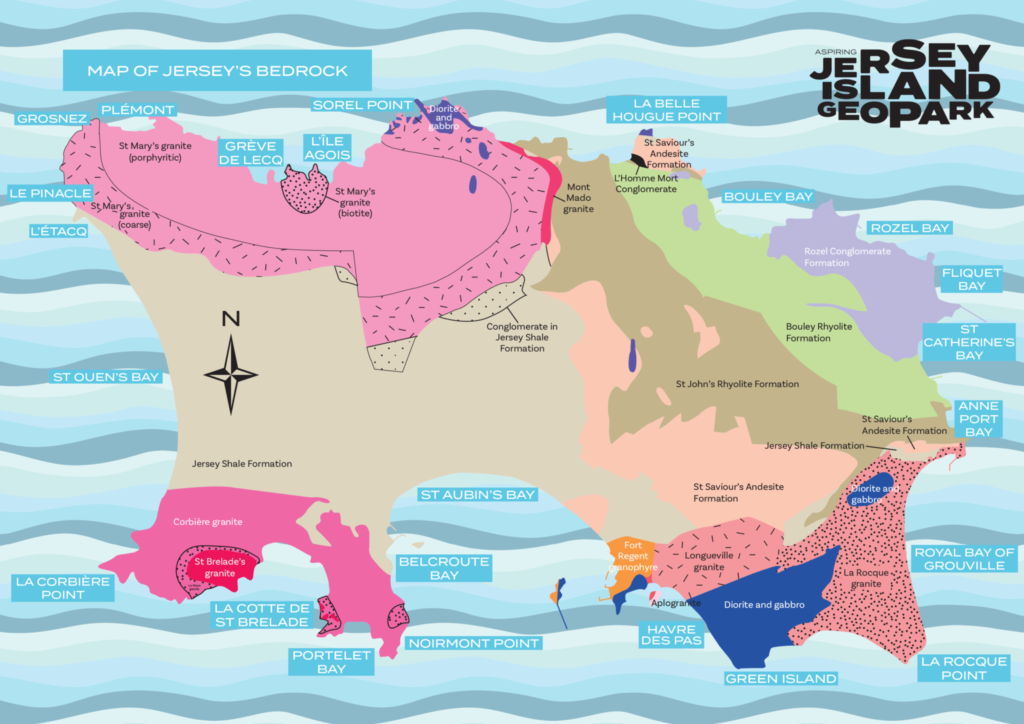
A Geopark tells the whole story of an area, right from the very beginning.
We spoke to Jersey Geologist Ralph Nicholls and Museum curator Millie Butel at the Jersey Museum.
The Aspiring Jersey Island Geopark Visitor Centre tells the story of Jersey’s geological heritage, with the aim of encouraging Islanders and visitors to explore Jersey and see first-hand how geology has shaped the Island we know today.
Millie Butel, Jersey Heritage’s Landscape Engagement & Geopark Development Curator, explained that Geoparks celebrate the links between people and the Earth. The Visitor Centre will show people why Jersey’s outstanding landscapes and seascapes could make the Island a candidate for future designation.
She said: ‘Jersey is more than just the rock it is made of – our Island is an incredible combination of natural, built and intangible heritage. A Geopark can tell the whole story and, if Jersey is successful in achieving a designation, it will be a statement of commitment to protect the Island we all love and to promote the landscapes, seascapes and heritage that are important to Islanders.
MINERALS OF JERSEY
Minerals are made from elements like silicon, oxygen, aluminium, iron and other metals. They are the fundamental building blocks of all rocks. As magma (molten rock) cools, minerals such as quartz and feldspar form crystals. The longer the cooling process takes, the larger the crystals. Minerals can also be carried through rocks by water, forming crystals as the water evaporates.
JERSEY SHALE FORMATION
The shales are the oldest rocks in the Island. You can see them in the west, across the centre and in the south of Jersey. They were formed by mud, silt and sand brought together on the sea floor about 600 million years ago. These sediments were transformed into rock by being pushed together, hardened and folded.
JERSEY VOLCANICS
Volcanic lavas and ashes can be seen along the north and northeast coasts of the Island. These andesites and rhyolites formed as a result of volcanic eruptions occurring 580 million years ago.
JERSEY GRANITES
Jersey is famous for its granites, which have been favoured as a building material for thousands of years. These major intrusive or ‘plutonic’ rocks were formed between 580 and 480 million years ago by molten rock cooling and solidifying between the Earth’s surface. They are only visible once the overlying rocks have been eroded away. The dark rocks known as gabbros are the oldest, and are rich in iron and magnesium. The true granites, visible along the northwest and southwest coasts, are lighter in colour, and consist of three main minerals: quartz, feldspar and mica. On the southeast coast, where granites have broken through the Earth’s surface into older gabbros, a mixed rock called diorite has formed.
ROZEL CONGLOMERATE
Formation Conglomerate can be seen along the northeast of the Island and is made up of beds of pebbles which have been cemented together. They were formed around 400 million years ago and are the youngest hard rock formation in Jersey. Conglomerate is also known as ‘pudding stone’ because the rock formation is made up of lots of pebbles, probably from eroded and worn mountains. Streams with fast flowing water carried the pebbles and sand down valleys and left them behind before they cemented together.
